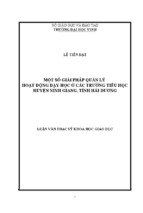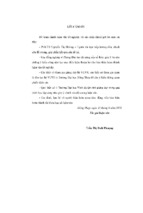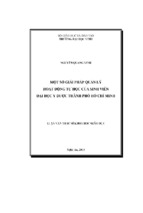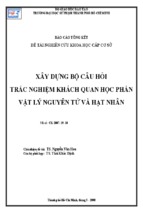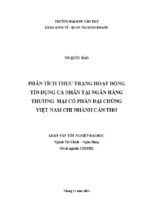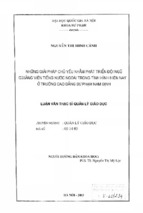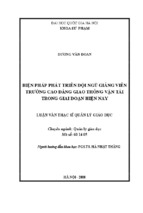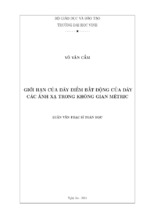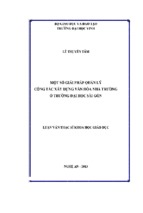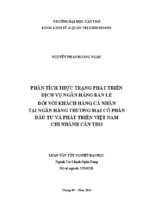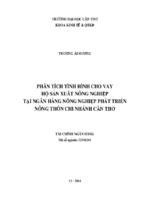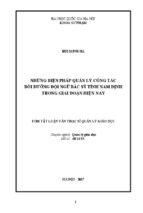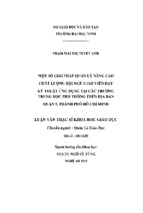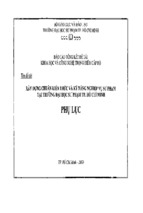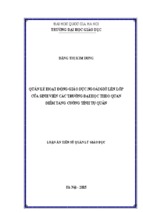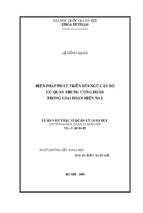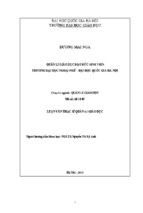EPA/635/R-01/001
TOXICOLOGICAL REVIEW
OF
CHLOROFORM
(CAS No. 67-66-3)
In Support of Summary Information on the
Integrated Risk Information System (IRIS)
October 2001
U.S. Environmental Protection Agency
Washington, DC
DISCLAIMER
This document has been reviewed in accordance with U.S. Environmental Protection Agency
policy. Mention of trade names or commercial products does not constitute endorsement or
recommendation for use.
Note: This document may undergo revisions in the future. The most up-to-date version will be
made available electronically via the IRIS Home Page at http://www.epa.gov/iris
ii
CONTENTS - TOXICOLOGICAL REVIEW OF CHLOROFORM
(CAS No. 67-66-3)
LIST OF TABLES . . . . . . . . . . . . . . . . . . . . . . . . . . . . . . . . . . . . . . . . . . . . . . . . . . . . . . . . . . v
LIST OF FIGURES . . . . . . . . . . . . . . . . . . . . . . . . . . . . . . . . . . . . . . . . . . . . . . . . . . . . . . . . . . v
ACRONYM LIST . . . . . . . . . . . . . . . . . . . . . . . . . . . . . . . . . . . . . . . . . . . . . . . . . . . . . . . . . . vi
FOREWORD . . . . . . . . . . . . . . . . . . . . . . . . . . . . . . . . . . . . . . . . . . . . . . . . . . . . . . . . . . . . . vii
AUTHORS, CONTRIBUTORS, AND REVIEWERS . . . . . . . . . . . . . . . . . . . . . . . . . . . . . . viii
SUMMARY OF SCIENCE ADVISORY BOARD RECOMMENDATIONS AND EPA
RESPONSES . . . . . . . . . . . . . . . . . . . . . . . . . . . . . . . . . . . . . . . . . . . . . . . . . . . . . . . . xi
1. INTRODUCTION . . . . . . . . . . . . . . . . . . . . . . . . . . . . . . . . . . . . . . . . . . . . . . . . . . . . . . . . 1
2. CHEMICAL AND PHYSICAL INFORMATION . . . . . . . . . . . . . . . . . . . . . . . . . . . . . . . . 2
3. TOXICOKINETICS . . . . . . . . . . . . . . . . . . . . . . . . . . . . . . . . . . . . . . . . . . . . . . . . . . . . . . . 2
3.1. ABSORPTION . . . . . . . . . . . . . . . . . . . . . . . . . . . . . . . . . . . . . . . . . . . . . . . . . 2
3.2. DISTRIBUTION . . . . . . . . . . . . . . . . . . . . . . . . . . . . . . . . . . . . . . . . . . . . . . . . 3
3.3. METABOLISM . . . . . . . . . . . . . . . . . . . . . . . . . . . . . . . . . . . . . . . . . . . . . . . . . 3
3.3.1. Oxidative and Reductive Pathways . . . . . . . . . . . . . . . . . . . . . . . . . . . . . 3
3.3.2. Fate of Reactive Metabolites . . . . . . . . . . . . . . . . . . . . . . . . . . . . . . . . . . 4
3.3.3. Relative Importance of Oxidative and Reductive Pathways . . . . . . . . . . . 6
3.4. EXCRETION . . . . . . . . . . . . . . . . . . . . . . . . . . . . . . . . . . . . . . . . . . . . . . . . . . . 6
3.5. PHYSIOLOGICALLY BASED PHARMACOKINETIC (PBPK) MODELS . . . 6
4. HAZARD IDENTIFICATION . . . . . . . . . . . . . . . . . . . . . . . . . . . . . . . . . . . . . . . . . . . . . . . 9
4.1. STUDIES IN HUMANS . . . . . . . . . . . . . . . . . . . . . . . . . . . . . . . . . . . . . . . . . . 9
4.1.1. Inhalation Studies in the Workplace . . . . . . . . . . . . . . . . . . . . . . . . . . . . 9
4.1.2. Exposure to Chloroform in Drinking Water . . . . . . . . . . . . . . . . . . . . . . 10
4.2. PRECHRONIC AND CHRONIC STUDIES AND CANCER BIOASSAYS
IN ANIMALS . . . . . . . . . . . . . . . . . . . . . . . . . . . . . . . . . . . . . . . . . . . . . . . . . 11
4.2.1. Oral Studies . . . . . . . . . . . . . . . . . . . . . . . . . . . . . . . . . . . . . . . . . . . . . 11
4.2.2. Inhalation Studies . . . . . . . . . . . . . . . . . . . . . . . . . . . . . . . . . . . . . . . . . 18
4.3. REPRODUCTIVE/DEVELOPMENTAL STUDIES . . . . . . . . . . . . . . . . . . . . 21
4.3.1. Oral Studies . . . . . . . . . . . . . . . . . . . . . . . . . . . . . . . . . . . . . . . . . . . . . 21
4.3.2. Inhalation Studies . . . . . . . . . . . . . . . . . . . . . . . . . . . . . . . . . . . . . . . . . 24
4.4. OTHER STUDIES . . . . . . . . . . . . . . . . . . . . . . . . . . . . . . . . . . . . . . . . . . . . . . 26
4.4.1. Other Effects . . . . . . . . . . . . . . . . . . . . . . . . . . . . . . . . . . . . . . . . . . . . 26
4.4.2. Mutagenicity . . . . . . . . . . . . . . . . . . . . . . . . . . . . . . . . . . . . . . . . . . . . . 27
4.4.3. Studies Related to Mode of Action . . . . . . . . . . . . . . . . . . . . . . . . . . . . 31
iii
CONTENTS (continued)
5.
6.
7.
4.4.4. Studies of Interactions With Other Chemicals . . . . . . . . . . . . . . . . . . . .
4.5. SYNTHESIS AND EVALUATION OF MAJOR NONCANCER
EFFECTS AND MODE OF ACTION . . . . . . . . . . . . . . . . . . . . . . . . . . . . .
4.6. WEIGHT-OF-EVIDENCE EVALUATION AND CANCER
CHARACTERIZATION . . . . . . . . . . . . . . . . . . . . . . . . . . . . . . . . . . . . . . .
4.6.1. Mode of Action . . . . . . . . . . . . . . . . . . . . . . . . . . . . . . . . . . . . . . . . . .
4.6.2. Weight of Evidence . . . . . . . . . . . . . . . . . . . . . . . . . . . . . . . . . . . . . . . .
4.7. SUSCEPTIBLE POPULATIONS . . . . . . . . . . . . . . . . . . . . . . . . . . . . . . . . . .
4.7.1. Possible Childhood Susceptibility . . . . . . . . . . . . . . . . . . . . . . . . . . . . .
4.7.2 Possible Gender Differences . . . . . . . . . . . . . . . . . . . . . . . . . . . . . . . . .
4.7.3 Other Factors that May Increase Susceptibility . . . . . . . . . . . . . . . . . . .
DOSE-RESPONSE ASSESSMENTS . . . . . . . . . . . . . . . . . . . . . . . . . . . . . . . . . . . . .
5.1. ORAL REFERENCE DOSE . . . . . . . . . . . . . . . . . . . . . . . . . . . . . . . . . . . . . .
5.1.1. NOAEL-LOAEL Approach . . . . . . . . . . . . . . . . . . . . . . . . . . . . . . . . .
5.1.2. Benchmark Dose Approach . . . . . . . . . . . . . . . . . . . . . . . . . . . . . . . . . .
5.1.3. Summary of Oral RfD Derivation . . . . . . . . . . . . . . . . . . . . . . . . . . . . .
5.2. INHALATION REFERENCE CONCENTRATION . . . . . . . . . . . . . . . . . . . .
5.3. ORAL CANCER ASSESSMENT . . . . . . . . . . . . . . . . . . . . . . . . . . . . . . . . . .
5.3.1. Choice of Approach . . . . . . . . . . . . . . . . . . . . . . . . . . . . . . . . . . . . . . .
5.3.2. Quantification of Cancer Risk . . . . . . . . . . . . . . . . . . . . . . . . . . . . . . . .
5.4. INHALATION CANCER ASSESSMENT . . . . . . . . . . . . . . . . . . . . . . . . . . . .
MAJOR CONCLUSIONS IN THE CHARACTERIZATION OF HAZARD
AND DOSE-RESPONSE . . . . . . . . . . . . . . . . . . . . . . . . . . . . . . . . . . . . . . . . . . . . .
6.1. HUMAN HAZARD POTENTIAL . . . . . . . . . . . . . . . . . . . . . . . . . . . . . . . . . .
6.1.1. Exposure Pathways . . . . . . . . . . . . . . . . . . . . . . . . . . . . . . . . . . . . . . . .
6.1.2. Toxicokinetics . . . . . . . . . . . . . . . . . . . . . . . . . . . . . . . . . . . . . . . . . . . .
6.1.3. Characterization of Noncancer Effects . . . . . . . . . . . . . . . . . . . . . . . . . .
6.1.4. Reproductive Effects and Risks to Children . . . . . . . . . . . . . . . . . . . . . .
6.1.5. Mode of Toxicity . . . . . . . . . . . . . . . . . . . . . . . . . . . . . . . . . . . . . . . . . .
6.1.6. Characterization of Human Carcinogenic Potential . . . . . . . . . . . . . . . . .
6.2. DOSE RESPONSE . . . . . . . . . . . . . . . . . . . . . . . . . . . . . . . . . . . . . . . . . . . . .
6.2.1. Oral RfD . . . . . . . . . . . . . . . . . . . . . . . . . . . . . . . . . . . . . . . . . . . . . . . .
6.2.2. Inhalation RfC . . . . . . . . . . . . . . . . . . . . . . . . . . . . . . . . . . . . . . . . . . . .
6.2.3. Oral Cancer Risk . . . . . . . . . . . . . . . . . . . . . . . . . . . . . . . . . . . . . . . . . .
6.2.4. Inhalation Cancer Risk . . . . . . . . . . . . . . . . . . . . . . . . . . . . . . . . . . . . . .
34
35
37
37
42
43
43
47
48
49
49
49
51
55
55
56
56
56
62
62
62
62
63
63
64
64
64
65
65
66
66
66
REFERENCES . . . . . . . . . . . . . . . . . . . . . . . . . . . . . . . . . . . . . . . . . . . . . . . . . . . . . . 67
APPENDIX A. EXTERNAL PEER REVIEW—SUMMARY OF COMMENTS AND
DISPOSITION . . . . . . . . . . . . . . . . . . . . . . . . . . . . . . . . . . . . . . . . . . . . . . . . . . . . . A-1
APPENDIX B. QUANTITATIVE DOSE-RESPONSE MODELING . . . . . . . . . . . . . . . . . B-1
iv
LIST OF TABLES
Table 1.
Table 2.
Table 3.
Table 4.
Table 5.
Table 6.
Table 7.
Table 8.
Table 9.
Summary of PBPK parameters . . . . . . . . . . . . . . . . . . . . . . . . . . . . . . . . . . . . . . . . . . 8
Summary of chloroform-induced cytotoxicity and cell proliferation via inhalation . . . 20
Correlation of carcinogenicity and regenerative cell hyperplasia . . . . . . . . . . . . . . . . . 39
Summary of oral noncancer studies in animals . . . . . . . . . . . . . . . . . . . . . . . . . . . . . . 50
Dose-response data sets used for BMD modeling . . . . . . . . . . . . . . . . . . . . . . . . . . . 53
Summary of noncancer BMD modeling results . . . . . . . . . . . . . . . . . . . . . . . . . . . . . 54
Summary of inhalation noncancer studies in humans and animals . . . . . . . . . . . . . . . . 57
Summary of oral cancer studies in animals . . . . . . . . . . . . . . . . . . . . . . . . . . . . . . . . . 60
Dose-response modeling of male rat kidney tumor data . . . . . . . . . . . . . . . . . . . . . . . 61
LIST OF FIGURES
Figure 1. Metabolic Pathways of Chloroform Biotransformation . . . . . . . . . . . . . . . . . . . . . . . . 5
Figure 2. SGPT Levels in Dogs Exposed to Chloroform for 7 Years . . . . . . . . . . . . . . . . . . . . 14
v
ACRONYM LIST
AIC
ATP
BDCM
BMD
BMDL
BMDS
BMR
BrdU
CHO
CYP2E1
DEN
DNA
EPA
GGT
GOT
ICPEMC
ILSI
IRIS
LD50
LDH
LI
LOAEL
NCI
NOAEL
PBPK
ppm
RBC
RfD
SAP
SGPT
THM
TTHM
U.S. EPA
Akaike information criterion
Adenosine tri-phosphate
Bromodichloromethane
Benchmark dose
A lower one-sided confidence limit on the BMD
Benchmark dose software
Benchmark response
Bromodeoxyuridine
Chinese hamster ovary
Cytochrome P-450-2E1
Diethylnitrosamine
Deoxyribonucleic acid
Environmental Protection Agency
Gamma glutamyl transferase
Glutamate oxaloacetate transaminase (aspartate aminotransferase)
International Commission for Protection against Environmental Mutagens
International Life Sciences Institute
Integrated Risk Information System
Lethal Dose 50 (dose causing death in 50% of the exposed animals)
Lactate dehydrogenase
Labeling index
Lowest-observed-adverse-effect-level
National Cancer Institute
No-observed-adverse-effect-level
Physiologically based pharmacokinetic models
Parts per million
Red blood cell
Reference dose
Serum alkaline phosphatase
Serum glutamate pyruvate transaminase (alanine aminotransferase)
Trihalomethane
Total trihalomethanes
United States Environmental Protection Agency
vi
FOREWORD
The purpose of this Toxicological Review is to provide scientific support and rationale
for the hazard and dose-response assessments in IRIS pertaining to chronic exposure to
chloroform. It is not intended to be a comprehensive treatise on the chemical or toxicological
nature of chloroform.
In Section 6, EPA has characterized its overall confidence in the quantitative and
qualitative aspects of hazard and dose response. Matters considered in this characterization
include knowledge gaps, uncertainties, quality of data, and scientific controversies. This
characterization is presented in an effort to make apparent the limitations of the assessment and
to aid and guide the risk assessor in the ensuing steps of the risk assessment process.
For other general information about this assessment or other questions relating to IRIS,
the reader is referred to EPA’s IRIS Hotline at 202-566-1676.
vii
AUTHORS, CONTRIBUTORS, AND REVIEWERS
Chemical Manager
Julie T. Du, Ph.D.
Office of Science and Technology
Office of Water
Washington, DC
Reviews
This Toxicological Review of Chloroform was based in part on the Health Risk
Assessment/Characterization of the Drinking Water Disinfectant Byproduct Chloroform and the
Draft Chloroform Risk Assessment (mode-of-action analysis for the carcinogenicity of
chloroform). Both documents have been peer-reviewed. The mode-of-action analysis was
reviewed by the Agency’s Science Advisory Board (SAB) in October 1999. The SAB reviewers
and consultants are listed below, and the SAB report can be found on the web at
http://www.epa.gov/sab/fiscal00.htm. The Agency response to SAB comments is shown
following the names of SAB reviewers. The Health Risk Assessment/Characterization of the
Drinking Water Disinfectant Byproduct Chloroform is peer-reviewed both by EPA scientists (see
Internal EPA Reviewers) and by independent scientists external to EPA (see External Peer
Reviewers). Summaries of the external peer reviewers’ comments and the disposition of their
recommendations are in Appendix A. Subsequent to the external review and incorporation of
comments, this Toxicological Review of Chloroform and IRIS Summaries have been written and
undergone an Agencywide review process whereby the IRIS program manager has achieved a
consensus approval among the Office of Research and Development; Office of Air and
Radiation; Office of Prevention, Pesticides, and Toxic Substances; Office of Solid Waste and
Emergency Response; Office of Water; Office of Policy; Office of Children’s Health Protection;
and the Regional Offices.
Before the reviews mentioned above, International Life Sciences Institute (ILSI) provided
a formal review of chloroform mode of action as part of a cooperative agreement with EPA. A
panel of ten scientific experts reviewed the literature and issued a report on the carcinogen risk
assessment of chloroform in November 1997. Similar to the SAB report, the ILSI report
supported a nonlinear approach for risk estimation.
As recommended by the SAB, a systematic analysis of the genotoxicity of chloroform,
including the most recent in vivo and in vitro studies, is included in this document and in the
IRIS summaries. A brief discussion of the epidemiological studies of chlorinated drinking water
(a mixture of disinfection byproducts including chloroform) is also included in this document.
On the noncancer endpoint, a more complete RfD analysis is performed including the traditional
NOAEL/LOAEL and the benchmark dose approaches. The final value is coincidentally the same
as the one previously on IRIS.
viii
AUTHORS, CONTRIBUTORS, AND REVIEWERS (continued)
Internal EPA Reviewers
Penelope Fenner-Crisp, Ph.D.
Office of Pesticide Programs
Vicki Dellarco, Ph.D.
Health Effects Division
Office of Pesticide Programs
Steve Nesnow, Ph.D.
National Health and Environmental Effects Research Laboratory
Jennifer Seed, Ph.D.
Risk Assessment Division
Office of Pollution Prevention and Toxics
Vanessa Vu, Ph.D.
National Center for Environmental Assessment
Office of Research and Development
External Peer Reviewers and Affiliation
External peer reviewers who provided comments on EPA's evaluation of chloroform are listed
below:
James A. Swenberg, D.V.M., Ph.D., University of North Carolina
Lorenz Rhomberg, Ph.D., Gradient Corporation
R. Julian Preston, Ph.D., Chemical Industry Institute of Toxicology
Summaries of the external peer reviewers’ comments and the disposition of their
recommendations are presented in Appendix A.
SAB Review of the Mode of Action of Chloroform
Co-chairs, members, and consultants of the SAB who provided review comments on EPA's
evaluation of chloroform are listed below:
Dr. Richard J. Bull, Battelle Pacific Northwest National Laboratory (Co-chair)
Dr. Mark J. Utell, University of Rochester Medical Center (Co-chair)
ix
AUTHORS, CONTRIBUTORS, AND REVIEWERS (continued)
Dr. Mary Davis, West Virginia University (member)
Dr. George Lambert, Robertwood Johnson University (member)
Dr. Lauren Zeise, California Environmental Protection Agency (member)
Dr. James E. Klaunig, Indiana University School of Medicine (consultant)
Dr. Richard Okita, Washington State University (consultant)
Dr. David Savitz, University of North Carolina, School of Public Health (consultant)
Dr. Verne Ray, Toxicologist (consultant)
Dr. Robert Maronpot, NIEHS (Federal Expert)
A summary of the comments provided by the SAB and EPA's response to those comments is
presented in the following two pages.
x
SUMMARY OF SCIENCE ADVISORY BOARD RECOMMENDATIONS
AND EPA RESPONSES
In October 1999 the Chloroform Risk Assessment Review Subcommittee of the Science
Advisory Board met to consider the Office of Science and Technology health assessment of
chloroform. Summaries of the major parts of the subcommittee’s advice and our responses
follow. The documents reviewed were a final hazard and dose-response characterization
document and a draft mode-of-action framework analysis.
1.
The subcommittee agreed with EPA that sustained or repeated cytotoxicity with
secondary regenerative hyperplasia in the liver and/or the kidney of rats and mice
precedes, and is probably a causal factor for, hepatic and renal neoplasia. Some members
of the subcommittee were concerned about possible mutagenic activity, and the
subcommittee recommended that the risk assessment further address the possible role of
mutagenicity as a mode of action.
EPA Response: The Office of Water has included a more complete analysis of mutagenic
potential in the final Toxicological Review of Chloroform.
2.
The Subcommittee concluded that a nonlinear margin-of-exposure approach is
scientifically reasonable for the liver tumor response because of the strong role
cytotoxicity appears to play. In contrast, the application of the standard linear approach to
the liver tumor data is likely to substantially overstate the low-dose risk. In addition,
there is considerable question about this response because it is not produced when
chloroform is administered to mice in drinking water.
For the kidney response, because sustained cytotoxicity plays a clear role in the rat, a
margin of exposure (MOE) is a scientifically reasonable approach. Most members of the
subcommittee thought that genotoxicity might possibly contribute to low-dose response
in this organ, while some thought it unlikely.
EPA Response: The Office of Water has utilized the MOE approach recommended by
SAB, but has also noted the reservations of some committee members regarding a
potential role for genotoxicity.
3.
The subcommittee concluded that the extensive epidemiologic evidence relating drinking
water disinfection (specifically chlorination) with cancer has little bearing on the
determination of whether chloroform is a carcinogen. It added recommendations for
discussion of endpoints and the potential meaning of these data to the assessment of
chloroform.
EPA Response: The hazard and dose-response assessment document reviewed by SAB
did not contain the complete analysis of epidemiologic studies and the populationattributable risk analysis. The latter were separately provided to the subcommittee. The
xi
Toxicological Review for Chloroform does provide a summary of these studies along with
a discussion of their limitations in evaluating cancer risk from chloroform in humans.
4.
The subcommittee found that the draft mode-of-action document addressed children’s
risks quite adequately, based on the scientific information currently available. The major
conclusions were believed correct, the role of CYP2E1 should be expressed as important,
and its definitive role in the developing human or (other) mammal has yet to be
confirmed. Nevertheless, the subcommittee report discussed knowledge of children’s
potential risk in several areas, such as exposure latency and transplacental and
transmamillary exposure, that can be improved.
EPA Response: The Office of Water has revised the Toxicological Review in accord with
the SAB recommendations. As the advice on some issues appears to be applicable
beyond the chloroform assessment and to carry implications for Agency guidance
documents, the advice will be discussed with the EPA Risk Assessment Forum.
xii
1. INTRODUCTION
This document presents background and justification for the hazard and dose-response
assessment summaries in EPA’s Integrated Risk Information System (IRIS). IRIS summaries
may include an oral reference dose (RfD), inhalation reference concentration (RfC), and a
carcinogenicity assessment.
The RfD and RfC provide quantitative information for noncancer dose-response
assessments. The RfD is based on the assumption that thresholds exist for certain toxic effects
such as cellular necrosis but may not exist for other toxic effects such as some carcinogenic
responses. It is expressed in units of mg/kg/day. In general, the RfD is an estimate (with
uncertainty spanning perhaps an order of magnitude) of a daily exposure to the human population
(including sensitive subgroups) that is likely to be without an appreciable risk of deleterious
effects during a lifetime. The inhalation RfC is analogous to the oral RfD, but provides a
continuous inhalation exposure estimate. The inhalation RfC considers toxic effects for both the
respiratory system (portal-of-entry) and for effects peripheral to the respiratory system
(extrarespiratory or systemic effects). It is generally expressed in units of mg/m3.
The carcinogenicity assessment provides information on the carcinogenic hazard potential
of the substance in question and quantitative estimates of risk from oral exposure and inhalation
exposure. The information includes a weight-of-evidence judgment of the likelihood that the
agent is a human carcinogen and the conditions under which the carcinogenic effects may be
expressed. Quantitative risk estimates are presented in three ways. The slope factor is the result
of application of a low-dose extrapolation procedure and is presented as the risk per mg/kg/day.
The unit risk is the quantitative estimate in terms of either risk per µg/L drinking water or risk
per µg/m3 air breathed. Another form in which risk is presented is as a drinking water or air
concentration providing cancer risks of 1 in 10,000; 1 in 100,000; or 1 in 1,000,000.
Development of these hazard identification and dose-response assessments for
chloroform has followed the general guidelines for risk assessment as set forth by the National
Research Council (1983). EPA guidelines that were used in the development of this assessment
may include the following: the Guidelines for Carcinogen Risk Assessment (U.S. EPA, 1986a),
Guidelines for the Health Risk Assessment of Chemical Mixtures (U.S. EPA, 1986b), Guidelines
for Mutagenicity Risk Assessment (U.S. EPA, 1986c), Guidelines for Developmental Toxicity
Risk Assessment (U.S. EPA, 1991), Proposed Guidelines for Neurotoxicity Risk Assessment (U.S.
EPA, 1998a), Proposed Guidelines for Carcinogen Risk Assessment (U.S. EPA, 1996a), Draft
Revisions of the Guidelines for Carcinogen Risk Assessment (U.S. EPA, 1999), Reproductive
Toxicity Risk Assessment Guidelines (U.S. EPA, 1996b); Recommendations for and
Documentation of Biological Values for Use in Risk Assessment (U.S. EPA, 1988); (proposed)
Interim Policy for Particle Size and Limit Concentration Issues in Inhalation Toxicity (U.S. EPA,
1994a); Methods for Derivation of Inhalation Reference Concentrations and Application of
Inhalation Dosimetry (U.S. EPA, 1994b); Peer Review and Peer Involvement at the U.S.
Environmental Protection Agency (U.S. EPA, 1994c); Use of the Benchmark Dose Approach in
Health Risk Assessment (U.S. EPA, 1995a); Science Policy Council Handbook: Peer Review
(U.S. EPA, 1998b); and memorandum from EPA Administrator, Carol Browner, dated March 21,
1995, Subject: Guidance on Risk Characterization.
1
The literature search strategies employed for this compound were based on the CASRN
and at least one common name. At a minimum, the following databases were searched: RTECS,
HSDB, TSCATS, CCRIS, GENETOX, EMIC, EMICBACK, DART, ETICBACK, TOXLINE,
CANCERLINE, MEDLINE, and MEDLINE backfiles. Any pertinent scientific information
submitted by the public to the IRIS Submission Desk was also considered in the development of
this document.
2. CHEMICAL AND PHYSICAL INFORMATION
Chloroform (trichloromethane) is a colorless, volatile liquid with a distinct odor.
Chloroform is nonflammable. It is slightly soluble in water and is readily miscible with most
organic solvents (Lewis 1993). Selected chemical and physical properties of chloroform are
listed below (Howard and Meylan 1997):
CASRN:
Empirical formula:
Molecular weight:
Density:
Vapor pressure:
Henry’s Law Constant:
Water solubility:
Log Kow:
67-66-3
CHCl3
119.38
1.483 g/mL
197 mm Hg at 25°C
3E-03 atm-m3/mole (0.12 mg/L in air per mg/L in water)
7.95 g/L at 25°C
1.97
Conversion factor (air):
1 ppm = 4.88 mg/m3
1 mg/m3 = 0.205 ppm
Because chloroform is relatively volatile, it tends to escape from contaminated environmental
media (e.g., water or soil) into air, and may also be released in vapor form from some types of
industrial or chemical operations. Therefore, humans may be exposed to chloroform not only by
ingestion of chloroform in drinking water, food, or soil, but also by dermal contact with
contaminated media (especially water) and by inhalation of vapor (especially in indoor air).
3. TOXICOKINETICS
3.1. ABSORPTION
Studies in animals indicate that gastrointestinal absorption of chloroform is rapid (peak
blood levels at about 1 hour) and extensive (64% to 98%) (U.S. EPA, 1997; ILSI, 1997; U.S.
EPA, 1998c). Limited data indicate that gastrointestinal absorption of chloroform is also rapid
and extensive in humans, with more than 90% of an oral dose recovered in expired air (either as
unchanged chloroform or carbon dioxide) within 8 hours (Fry et al., 1972).
2
Most studies of chloroform absorption following oral exposure have used oil-based
vehicles and gavage dosing (U.S. EPA, 1994d, 1998c). This is of potential significance because
most humans are exposed to chloroform by ingestion in drinking water. Withey et al. (1983)
compared the rate and extent of gastrointestinal absorption of chloroform following gavage
administration in either aqueous or corn oil vehicles. Twelve male Wistar rats were administered
single oral doses of 75 mg chloroform/kg via gavage. The time-to-peak blood concentration of
chloroform was similar for both vehicles; however, the concentration of chloroform in the blood
was lower at all time points for the animals administered chloroform in the oil vehicle compared
with animals administered the water vehicle. The authors interpreted this to indicate that the rate
of chloroform absorption was higher from water than from oil, although differences in the rate of
first-pass metabolism in the liver might contribute to the observed difference (U.S. EPA, 1994d,
1998c).
Dermal and inhalation absorption of chloroform by humans during showering was
investigated by Jo et al. (1990). Chloroform concentrations in exhaled breath were measured in
six human subjects before and after a normal shower, and following inhalation-only shower
exposure. Breath levels measured at 5 minutes following either exposure correlated with tap
water levels of chloroform. Breath levels following inhalation exposure only were about half
those following a normal shower (both inhalation and dermal contact). These data indicate that
humans absorb chloroform by both the dermal and inhalation routes (U.S. EPA, 1994d).
3.2. DISTRIBUTION
Absorbed chloroform appears to distribute widely throughout the body (U.S. EPA, 1994d,
1998c). In postmortem samples from eight humans, the highest levels of chloroform were
detected in the body fat (5–68 :g/kg), with lower levels (1–10 :g/kg) detected in the kidney,
liver, and brain (McConnell et al., 1975). Studies in animals indicate rapid uptake of chloroform
by the liver and kidney (U.S. EPA, 1997). In mice receiving chloroform via gavage in either
corn oil or water, maximal uptake of chloroform was achieved within 10 minutes in the liver and
within 1 hour in the kidney (Pereira, 1994). Following intraperitoneal injection of 150 mg/kg
14
C-chloroform, peak radioactivity levels were achieved in the liver, kidney, and blood of male
mice within 10 minutes of dosing, and had returned to background levels within 3 hours (Gemma
et al., 1996).
3.3. METABOLISM
3.3.1. Oxidative and Reductive Pathways
Chloroform is metabolized in humans and animals by cytochrome P450-dependent
pathways. In the presence of oxygen (oxidative metabolism), the chief product is
trichloromethanol, which rapidly and spontaneously dehydrochlorinates to form phosgene
(CCl2O):
2 CHCl3 + NADPH + H+ + O2 2 CCl3OH + NADP+
CCl3OH CCl2O + HCl
3
In the absence of oxygen (reductive metabolism), the chief metabolite is dichloromethyl free
radical (CHCl 2) (U.S. EPA, 1997; ILSI, 1997).
Nearly all tissues of the body are capable of metabolizing chloroform, but the rate of
metabolism is greatest in liver, kidney cortex, and nasal mucosa (ILSI, 1997). These tissues are
also the principal sites of chloroform toxicity, indicating the importance of metabolism in the
mode of action of chloroform toxicity.
At low chloroform concentrations, metabolism occurs primarily via cytochrome P4502E1 (CYP2E1) (Constan et al., 1999). The level of this isozyme (and hence the rate of
chloroform metabolism) is induced by a variety of alcohols (including ethanol) and ketones, and
may be inhibited by phenobarbital. At high chloroform concentrations, metabolism is also
catalyzed by cytochrome P450-2B1/2 (CYP2B1/2) (ILSI, 1997; U.S. EPA, 1997, 1998c).
Because chloroform metabolism is enzyme-dependent, the rate of metabolism displays saturation
kinetics. Under low dose-rate conditions, nearly all of a dose is metabolized. However, as the
dose or the dose rate increases, metabolic capacity may become saturated and increasing fractions
of the dose are excreted as the unmetabolized parent (Fry et al., 1972).
3.3.2. Fate of Reactive Metabolites
The products of oxidative metabolism (phosgene) and reductive metabolism
(dichloromethyl free radical) are both highly reactive. Phosgene is electrophilic and undergoes
attack by a variety of nucleophiles. The predominant reaction is hydrolysis by water, yielding
carbon dioxide and hydrochloric acid:
CCl2O + H2O CO2 + 2 HCl
The rate of phosgene hydrolysis is very rapid, with a half-time of less than 1 second (De Bruyn et
al., 1995). Phosgene also reacts with a wide variety of other nucleophiles, including primary and
secondary amines, hydroxy groups, and thiols (Schneider and Diller, 1991). For example,
phosgene reacts with the thiol group of glutathione (GSH), yielding S-chloro-carbonyl
glutathione, which in turn can either interact further with glutathione to form diglutathionyl
dithiocarbonate, or form glutathione disulfide and carbon monoxide (ILSI, 1997):
CCl2O + GSH GSCOCl + HCl
GSCOCl + GSH GS-CO-SG + HCl
GSCOCl + GSH GSSG + CO + HCl
Phosgene also undergoes attack by nucleophilic groups (-SH, -OH, -NH2) in cellular
macromolecules such as enzymes, proteins, or the polar heads of phospholipids, resulting in
formation of covalent adducts (Pohl et al., 1977, 1980, 1981; Pereira and Chang, 1981; Pereira et
al., 1984; Noort et al., 2000). Formation of these molecular adducts can interfere with molecular
function (e.g., loss of enzyme activity), which in turn may lead to loss of cellular function and
subsequent cell death (ILSI, 1997; WHO, 1998).
4
5
Free radicals that are formed under conditions of low oxygen are also extremely reactive,
forming covalent adducts with microsomal enzymes and the fatty acid tails of phospholipids,
probably quite close to the site of free radical formation (cytochrome P450 in microsomal
membranes). This results in a general loss of microsomal enzyme activity, and can also result in
lipid peroxidation (ILSI, 1997; U.S. EPA, 1998c).
3.3.3. Relative Importance of Oxidative and Reductive Pathways
A priori, it might be expected that the oxidative pathway of chloroform metabolism
would predominate in vivo, because tissues of healthy animals are oxygenated. However, some
investigators have noted that the centrilobular region of the liver, where chloroform
hepatotoxicity is largely localized, is physiologically hypoxic, with oxygen partial pressures from
0.1% to 8% (U.S. EPA, 1998c; ILSI, 1997).
Nevertheless, two lines of evidence suggest that metabolism occurs mainly via the
oxidative pathway. First, reductive metabolism of chloroform is observed only in phenobarbitalinduced animals or in tissues prepared from them, with negligible reducing activity observed in
uninduced animals (ILSI, 1997). Second, in vitro studies using liver and kidney microsomes
from mice indicate that, even under relatively low (2.6%) oxygen partial pressure (approximately
average for the liver), more than 75% of the phospholipid binding was to the fatty acid heads.
This pattern of adduct formation on phospholipids is consistent with phosgene, not free radicals,
as the main reactive species, indicating metabolism was chiefly by the oxidative pathway (U.S.
EPA, 1998c; ILSI, 1997). Addition of glutathione to the incubation system completely negated
binding to liver microsomes, with only residual binding remaining in kidney microsomes (ILSI,
1997). This quenching by glutathione is expected for the products of oxidative but not reductive
metabolism. Taken together, these observations strongly support the conclusion that chloroform
metabolism in vivo occurs primarily via the oxidative pathway, except under special conditions
of high chloroform doses in preinduced animals (ILSI 1997, U.S. EPA 1998c).
3.4. EXCRETION
Excretion of chloroform occurs primarily via the lungs (U.S. EPA, 1998c). Results from
studies in humans indicate that approximately 90% of an oral dose of chloroform was exhaled
(either as chloroform or as carbon dioxide), with less than 0.01% of the dose excreted in the
urine (U.S. EPA, 1994d). In mice and rats, 45%–88% of an oral dose of chloroform was
excreted from the lungs either as chloroform or carbon dioxide, with 1%–5% excreted in the
urine (U.S. EPA, 1998c).
No data are available regarding the bioaccumulation or retention of chloroform following
repeated exposure. However, because of the rapid excretion and metabolism of chloroform,
combined with low levels of chloroform detected in human postmortem tissue samples, marked
accumulation and retention of chloroform is not expected (U.S. EPA, 1994d).
3.5. PHYSIOLOGICALLY BASED PHARMACOKINETIC (PBPK) MODELS
The concentration of a chemical that reaches a target tissue following some external
exposure depends not only on the external dose administered to the organism (human or animal),
6
but also on a number of physiological parameters that may differ significantly from organism to
organism. Likewise, the rate and extent of metabolism of the chemical to less toxic or more
toxic intermediates may also vary from tissue to tissue and from organism to organism.
Therefore, extrapolation of toxicological observations from dose to dose, from route to route, and
from organism to organism are all quite uncertain unless a detailed understanding exists
regarding the absorption, distribution, metabolism, and clearance of the chemical. Mathematical
models that describe the rate and extent of absorption, distribution, metabolism, and clearance as
a function of dose, time, route, and organism-specific physiological parameters are referred to as
physiologically based pharmacokinetic (PBPK) models.
Corley et al. (1990) developed a PBPK model for chloroform. In brief, the model
consists of a series of differential equations that describe the rate of chloroform entry into and
exiting from each of a series of body compartments, including (1) gastrointestinal tract, (2) lungs,
(3) arterial blood, (4) venous blood, (5) liver, (6) kidney, (7) other rapidly perfused tissues,
(8) slowly perfused tissues, and (9) fat. In general, the rate of input to each compartment is
described by the product of (a) the rate of blood flow to the compartment, (b) the concentration
of chloroform in arterial blood, and (c) the partition coefficient between blood and tissue.
Absorption of chloroform into the blood from the lungs or stomach is modeled by assuming firstorder absorption kinetics. Material absorbed from the stomach is assumed to flow via the portal
system directly to the liver (the "first-pass effect"), while material absorbed from the lungs enters
the arterial blood. Each tissue compartment is assumed to be well mixed, with venous blood
leaving the tissue being in equilibrium with the tissue. Metabolism of chloroform is assumed to
occur in both the liver and the kidney. The rate of metabolism is assumed to be saturable and is
described by Michaelis-Menten type equations. Chloroform metabolism is assumed to lead to
binding of a fraction of the total metabolites to cellular macromolecules, and the amount bound is
one indicator of the delivered dose. Binding of reactive metabolites to cell macromolecules is
also assumed to cause a loss of some of the metabolic capacity of the cell. This metabolic
capacity (enzyme level) is then resynthesized at a rate proportional to the amount of decrease
from the normal level. Based on a review of published physiological and biochemical data, as
well as several studies specifically designed to obtain model parameter estimates, Corley et al.
(1990) provided recommended values for each of the model inputs for three organisms (mouse,
rat, and human). These values are shown in Table 1. On the basis of these inputs, the model
predicted that the amount of chloroform metabolized per unit dose per kg of tissue (liver or
kidney) would be highest in the mouse, intermediate in the rat, and lowest in the human. This
difference between species is due to the lower rates of metabolism, ventilation, and cardiac
output in larger species compared to smaller species. If equal amounts of metabolite binding to
cellular molecules were assumed to be equitoxic to tissues, then the relative potency of
chloroform would be mice > rats > humans.
The model was extended by Reitz et al. (1990), who added equations describing the effect
of chloroform metabolism on cell killing in the liver. It was assumed that cells were subject to
risk of death when the rate of metabolism exceeded the ability of the cell to detoxify the
metabolic products, with the probability of any particular cell dying being characterized by a
normal distribution function. In addition, it was assumed that cell death did not occur instantly,
but depended on both the rate of metabolism and the time of exposure. Results from this model
7
Table 1. Summary of PBPK parameters
Parameter
Tissue/compartment
Mouse
Rat
Human
Body weight (kg)
--
0.0285
0.230
70.0
Percentage of body
weight
Liver
5.86
2.53
3.14
Kidney
1.70
0.71
0.44
Fat
6.00
6.30
23.1
Rapidly perfused
3.30
4.39
3.27
Slowly perfused
74.1
77.1
61.1
Alveolar ventilation
2.01
5.06
347.9
Cardiac output
2.01
5.06
347.9
Liver
25.0
25.0
25.0
Kidney
25.0
25.0
25.0
Fat
2.0
5.0
5.0
Rapidly perfused
29.0
26.0
26.0
Slowly perfused
19.0
19.0
19.0
Blood/air
21.3
20.8
7.43
Liver/air
19.1
21.1
17.0
Kidney/air
11.0
11.0
11.0
Fat/air
242
203
280
Rapidly perfused/air
19.1
21.1
17.0
Slowly perfused/air
13.0
13.9
12.0
VmaxC (mg/kg/hr)
22.8
6.8
15.7
Km (mg/L)
0.352
0.543
0.448
kloss (L/mg)
5.72E-4
0
0
kresysn (1/hr)
0.125
0
0
A (kidney/liver)
0.153
0.052
0.033
fMMB in liver (1/hr)
0.003
0.00104
0.00202
fMMB in kidney (1/hr)
0.010
0.0086
0.00931
kas from corn oil (1/hr)
0.6
0.6
0.6
kas from water (1/hr)
5.0
5.0
5.0
Flows (L/hr)
Tissue blood flow (%
cardiac output)
Partition coefficients
Metabolic constants
Gastric absorption rate
constants
All values are derived from Corley et al., 1990.
8
- Xem thêm -

